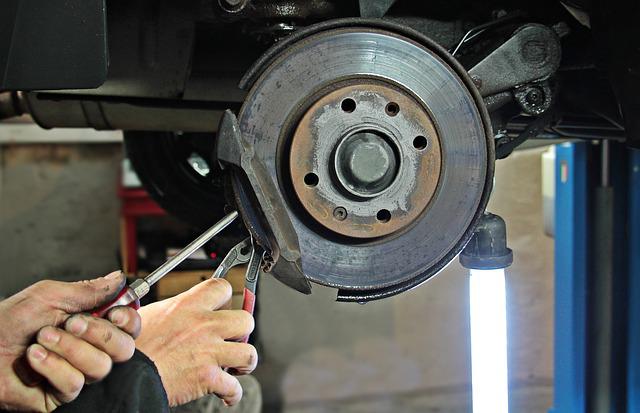
Technical service bulletins can be documents issued by the original vehicle manufacturer. They describe common complaints about a model and offer recommendations for how to diagnose the problem. If the manufacturer is unable or unwilling to solve the problem on its own, they may issue a technical service bulletin. Every year, auto manufacturers issue thousands upon thousands of service bulletins to different types of vehicles. The vast majority of these bulletins will never be seen by an average car buyer.
Technical service bulletins
Technical Service Bulletins (TSBs) are documents that provide recommendations for vehicle repairs. These bulletins can be issued by vehicle manufacturers when an unanticipated series of events occurs. These are some of the most frequently used TSBs.

Tech Service Bulletins address both minor and significant issues. Technical service bulletins are issued by the automaker for their dealerships to follow. These bulletins can address a range of problems, and sometimes include repair instructions with illustrated illustrations. They list the required parts and include the labor cost. These bulletins may be downloaded from the manufacturer's web site.
Directives on airworthiness
Often, aircraft owners and operators will need to comply with Airworthiness Directives in Service Bulletins. However, the benefits of complying with these directives may outweigh the costs. Before issuing new service bulletins to their aircraft owners, they will need a cost/benefit analysis. The following are guidelines for compliance with Airworthiness Directives in Service Bulletins. Below are some examples.
Manufacturers send service bulletins to notify aircraft owners of safety enhancements. While it's up to the individual to decide whether to follow the manufacturer, you should follow their instructions. It is important to follow manufacturer's advice because they provide valuable information about trends as well as flaws. These bulletins are also issued by manufacturers to assist aircraft owners and mechanics in identifying and addressing items that might wear faster than expected.
Manufacturer recalls
To inform customers of possible problems with their car, manufacturers issue a service notice. They do so in order to give dealerships and owners sufficient time to make the repairs. These bulletins provide owners and dealers with information and parts that can be used to fix a recalled vehicle. Although automakers are not required to publish service bulletins on their websites, they must provide them to affected customers. Dealers cannot fix defects in vehicles that were brought to them before the recall announcement.

To address specific problems, technical service bulletins may be issued. This could be a problem with a particular model's power door lock or starter, or even a poorly installed floormat. Many bulletins also provide information on how you can fix the problem. Bulletins also include a list of labor and parts costs. These bulletins are important for safety and maintenance.
FAQ
How long is an automotive course?
A three-year course in automotive is required.
The first year is spent learning about cars and theory. Practical training is the second year. You will learn to drive, fix engines and perform other tasks around the car. The last year is spent at a local shop, where you will get practical experience with real-world problems.
What do I need to know about car mechanics?
Auto mechanics don't require any knowledge. You only need to know how to fix them. This is why most people get started with simple jobs such as changing brake pads or tires. Then they move on to more difficult repairs.
It is important to be able to read and understand diagrams as well as written instructions. Also, you will need to know how to tell if parts require replacing or repair.
It's important to remember that you shouldn't attempt to repair vehicles without having received proper training and guidance. This is especially true for expensive components, such as transmissions and engines.
In fact, even though you won't need to know much about cars, you will need to thoroughly know the basics of mechanical engineering and physics. This involves understanding how engines work and how brakes work.
It's also worth noting that you'll need to be prepared to deal with all sorts of situations. You might be required to work on a vehicle that was involved in an accident. You'll also need experience dealing with breakdowns and accidents.
Finally, you must be willing to learn new skills quickly. As well as being able to diagnose problems, you'll need to be able to perform simple maintenance tasks such as tightening nuts and bolts.
What are the requirements for an automotive technician?
You must have graduated high school or GED, with excellent English and math grades. Additionally, you will need to be proficient in reading and writing. Before you can start working, you will have to pass a written exam and take a series practical tests.
Statistics
- According to the BLS, the median annual salary for automotive service technicians and mechanics in the United States was $44,050 in May 2020. (uti.edu)
- 52% of Mechanics in the United States think their salaries are enough for the cost of living in their area. (indeed.com)
- According to the BLS, total auto technician employment is expected to exceed 705,000 by 2030. (uti.edu)
External Links
How To
How to obtain a mechanic certificate
For those who are interested in becoming certified automotive technicians, the mechanic's certifications will help. They cover all aspects of auto repairs including engine diagnostics. Electrical systems. Brakes, suspension. steering. Fuel injection. Air conditioning. Heating. Exhaust. Diagnostic tools. Body repairs. Collision damage repair. Paintless dent removal. Motor vehicle emissions testing.
The program comprises 12 hours of classroom instruction, and three months on-the job training at a participating dealership. The semester must include at least 60 hours of classroom instruction and passing a written exam that includes theory and practice questions. The National Institute for Automotive Service Excellence will administer the state exam to students who have completed the coursework. To be employed as an automotive service technician, you must have ASE certification.